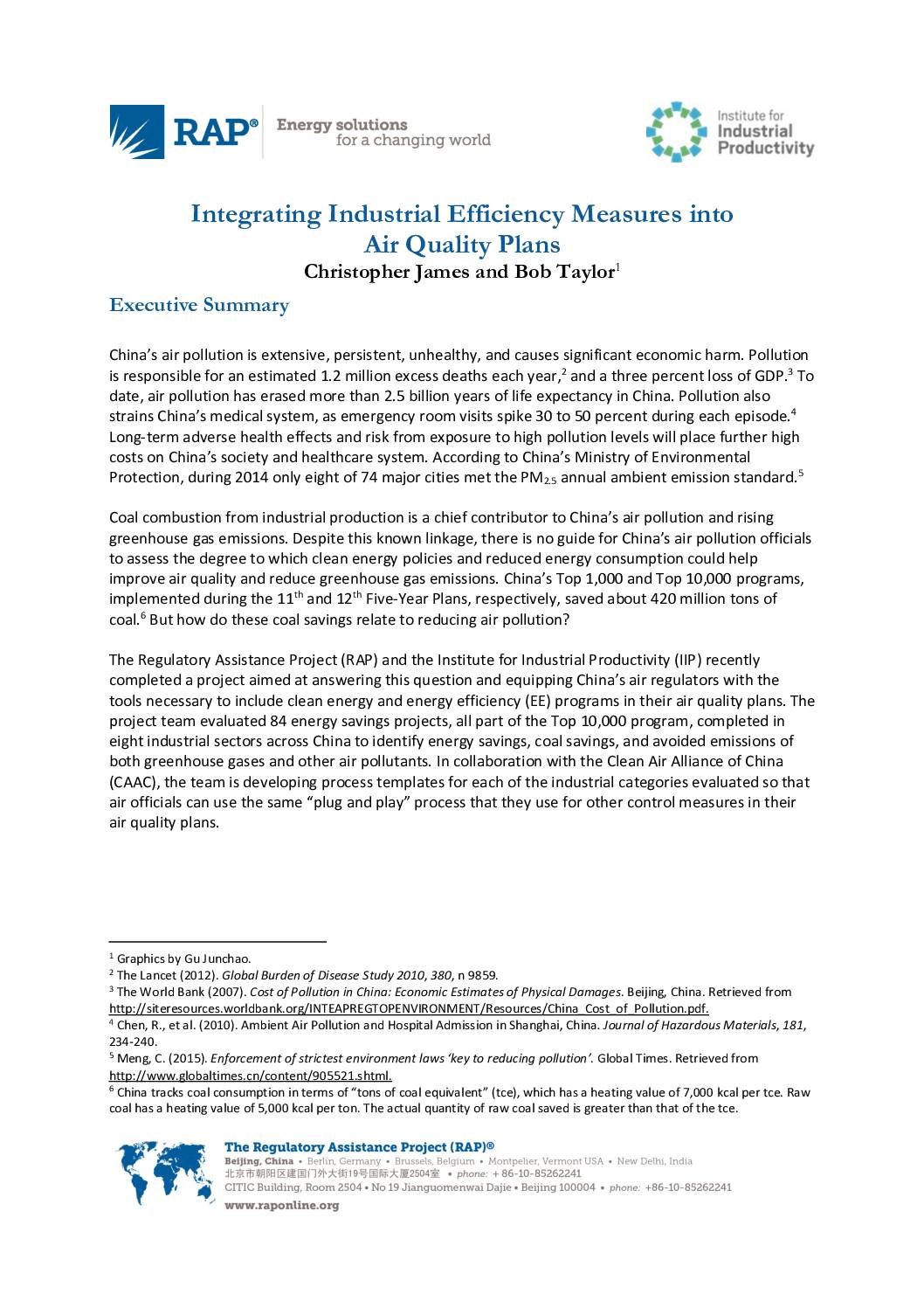This 2015 report, by the Regulatory Assistance Project (RAP) and IIP, is designed to equip China’s air regulators with the tools necessary to include clean energy and energy efficiency programs in their air quality plans.
China’s air pollution is extensive, persistent, unhealthy, and causes significant economic harm. Pollution is responsible for an estimated 1.2 million excess deaths each year, and a three percent loss of GDP. To date, air pollution has erased more than 2.5 billion years of life expectancy in China. Pollution also strains China’s medical system, as emergency room visits spike 30 to 50 percent during each episode. Long-term adverse health effects and risk from exposure to high pollution levels will place further high costs on China’s society and healthcare system. According to China’s Ministry of Environmental Protection, during 2014 only eight of 74 major cities met the PM2.5 annual ambient emission standard.
Coal combustion from industrial production is a chief contributor to China’s air pollution and rising greenhouse gas emissions. Despite this known linkage, there is no guide for China’s air pollution officials to assess the degree to which clean energy policies and reduced energy consumption could help improve air quality and reduce greenhouse gas emissions. China’s Top 1,000 and Top 10,000 programs, implemented during the 11th and 12th Five-Year Plans, respectively, saved about 420 million tons of coal. But how do these coal savings relate to reducing air pollution?
The Regulatory Assistance Project (RAP) and the Institute for Industrial Productivity (IIP) recently completed a project aimed at answering this question and equipping China’s air regulators with the tools necessary to include clean energy and energy efficiency (EE) programs in their air quality plans. The project team evaluated 84 energy savings projects, all part of the Top 10,000 program, completed in eight industrial sectors across China to identify energy savings, coal savings, and avoided emissions of both greenhouse gases and other air pollutants. In collaboration with the Clean Air Alliance of China (CAAC), the team is developing process templates for each of the industrial categories evaluated so that air officials can use the same “plug and play” process that they use for other control measures in their air quality plans
Share this

Sectors: Cross cutting, Industry, Renewables
Country / Region: Asia, China
Tags: clean energies, cleaning, corporate reporting, energy, energy efficiency, projectsKnowledge Object: Publication / Report
Published by: IIP
Publishing year: 2015
Author: Christopher James, Bob Taylor
